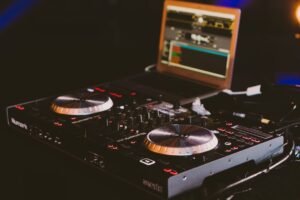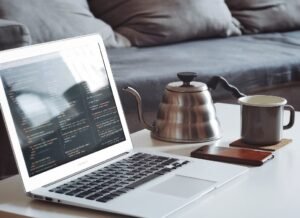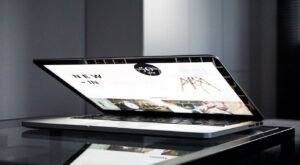Is AI Art Copyright Infringement?
Artificial Intelligence (AI) has been transforming various industries, including the art world. AI-generated art has become increasingly popular, raising important questions about copyright infringement. This article explores the complexities surrounding the ownership and protection of AI-generated artwork.
Key Takeaways
- AI-generated art challenges traditional notions of copyright ownership.
- Copyright protections generally apply to human-created works, leaving AI-generated art in a legal grey area.
- Collaboration between humans and AI in art creation complicates copyright claims.
- Creative intent and authorship are crucial factors in determining copyright ownership.
- Legal frameworks and guidelines for AI-generated art are still under development.
Understanding the Complexities
AI-generated art refers to artwork created, at least in part, by artificial intelligence algorithms. These algorithms can analyze vast amounts of data and produce artistic outputs that mimic various styles and techniques. *AI’s ability to create original and aesthetically pleasing art has captured the attention of artists, collectors, and legal professionals alike*. However, determining copyright ownership and infringements in the context of AI-generated art poses unique challenges.
The Nuances of Copyright Ownership
Copyright laws grant exclusive rights to authors or creators of original works. However, defining who these authors or creators are becomes *more complex when AI is involved*. While human artists may initiate the artwork, the AI technology’s contribution blurs the line of authorship. In most jurisdictions, copyright protections are limited to human-created works, leaving *AI-generated art in an ambiguous space*.
Collaboration Between Humans and AI
Art creation is increasingly a collaborative process between human artists and AI algorithms. In such cases, determining copyright ownership becomes even murkier. The extent of human involvement, the AI’s role, and creative intent are all factors that must be considered when determining copyright claims. *The collaborative nature of AI-generated art challenges existing legal frameworks designed for traditional forms of art*.
The Role of Creative Intent
Creative intent plays a crucial role in copyright ownership. Artistic choices made by humans and the purpose behind their collaboration with AI are significant factors. If an artist uses AI as a tool to enhance their creative process, they are likely considered the author. On the other hand, if an AI system autonomously generates a piece of art without human intervention, it becomes challenging to attribute authorship, and copyright ownership becomes more complicated. *Determining creative intent is an essential aspect of resolving copyright issues surrounding AI-generated art*.
The Need for Legal Frameworks
As AI-generated art gains popularity, lawmakers and legal experts are grappling with the need for updated legal frameworks and guidelines. These frameworks should address the challenges and complexities posed by AI, ensuring fair and clear copyright ownership. *Efforts are underway to develop legal systems that account for the unique nature of AI-generated art*. Until then, the art community and legal professionals must navigate this legal grey area and work towards innovative solutions.
The Future of AI Art
AI-generated art has brought forth a new era of creativity and questions surrounding copyright. It has sparked debates, pushed boundaries, and challenged conventional norms. As AI technology continues to evolve, so will the discussions and legal frameworks surrounding AI-generated art. *The future holds exciting possibilities for AI in art, as long as we develop comprehensive and inclusive approaches to copyright protection and ownership*.
Tables
| Table 1: Copyright Ownership Scenarios for AI-Generated Art | |
|---|---|
| Scenario | Copyright Ownership |
| Human artist uses AI as a tool in their creative process | The human artist is likely considered the author. |
| AI system autonomously generates art without human intervention | Attributing authorship becomes challenging. |
| Collaboration between human artist and AI in art creation | Ownership depends on the level of human input and creative intent. |
| Table 2: Jurisdictional Differences in AI Art Copyright | |
|---|---|
| Jurisdiction | Approach to AI Art Copyright |
| United States | Existing copyright laws generally apply to human-created works, excluding AI-generated art. |
| European Union | AI-generated art may be eligible for copyright protection, provided it meets certain criteria. |
| China | Recognition and protection of AI-generated art in copyright law are still evolving. |
| Table 3: Possible Ways to Address AI Art Copyright | |
|---|---|
| Solution | Description |
| Amending Copyright Laws | Update existing laws to explicitly include AI-generated art and define copyright ownership criteria. |
| Develop guidelines specific to AI-generated art to provide clarity on authorship and ownership. | |
| Creating AI Art Licensing Systems | Implement licensing systems to manage the use and distribution of AI-generated art. |

Common Misconceptions
Misconception: Artificial Intelligence (AI) art is always copyright infringement
AI art, which is created using algorithms or machine learning, is often misunderstood in terms of copyright infringement. While it is true that AI can produce artwork that resembles existing works, not all AI-generated art is automatically considered a copyright violation.
- AI art is not a simple copy or reproduction of existing artwork.
- The use of AI to create art can result in unique and original pieces.
- Legal implications of AI art can vary depending on the specific circumstances and jurisdiction.
Misconception: AI-generated art takes away the artist’s control
Many people assume that AI-generated art removes the artist’s control and input from the creative process. However, that is not entirely accurate. Artists using AI as a tool still have significant control over the output and can influence the algorithms to shape the final result.
- Artists using AI can set constraints and parameters for their algorithms.
- They can guide and refine the AI’s output to align with their artistic vision.
- AI is not a substitute for creativity, but rather a tool that artists can use to enhance their artistic process.
Misconception: AI-generated art lacks originality and human creativity
Another common misconception surrounding AI art is that it lacks originality and creative value due to its algorithmic nature. However, AI can produce artwork that is unique and innovative, sometimes even surprising the artist.
- AI can generate unexpected and novel ideas that can inspire artists.
- Artists can use AI as a source of inspiration and a means to explore new creative possibilities.
- AI-generated art can push the boundaries of what is considered traditional creativity.
Misconception: AI art poses a threat to human artists
Some people worry that AI-generated art can replace human artists and make their efforts obsolete. While AI does offer new possibilities in the art world, it is not meant to replace human creativity. Instead, it can be seen as a tool that can augment and collaborate with human artists.
- AI can assist artists in achieving their creative goals more efficiently.
- Human artists can integrate AI into their artistic process, expanding their creative palette.
- AI-generated art can coexist alongside human-made art, offering new perspectives and opportunities.
Misconception: AI art is not protected by copyright
There is a misconception that AI-generated art cannot be protected by copyright because it is created by algorithms rather than human artists. However, in many jurisdictions, the person who trained or directs the AI system is considered the author of the resulting artwork and is entitled to copyright protection.
- Certain legal frameworks recognize the role of the human creator behind the AI-generated art.
- Copyright laws can be adapted to encompass the unique nature of AI-generated art.
- The attribution and ownership of AI art can still be complex and require further legal development.

Introduction
As artificial intelligence continues to permeate various industries, questions surrounding its impact on copyright law, particularly in relation to AI-generated art, are becoming increasingly important. This article takes a closer look at whether AI art can be considered copyright infringement or a form of creative expression. Through the use of ten engaging tables, we explore different aspects of this complex topic to shed light on the ongoing debate.
Table: Famous AI-Generated Artworks
Explore a selection of renowned artworks created by artificial intelligence, highlighting the growing influence of AI in the art community.
| Artwork | Year Created | AI Algorithm |
|---|---|---|
| Portrait of Edmond de Belamy | 2018 | GAN (Generative Adversarial Network) |
| The Next Rembrandt | 2016 | Deep Learning Algorithm |
| AI-generated Landscape | 2019 | Convolutional Neural Network |
Table: Copyright Ownership
Understanding the current copyright landscape in relation to AI-generated art and its impact on artists and creators.
| Artwork | Copyright Owner | Legal Implications |
|---|---|---|
| AI-Generated Art | Developer/Programmer | Limited ownership rights for the AI’s creator, extensive public domain implications |
| Human-AI Collaborative Art | Jointly owned | Shared ownership between AI and human, potential disputes over profit and attribution |
Table: Fair Use Considerations
Exploring the concept of fair use and its implications for AI-generated art in relation to copyright infringement.
| Scenario | Fair Use Analysis | Ruling |
|---|---|---|
| AI Art as Commentary | Transformative use, negligible market impact | Often considered fair use |
| AI Art Reproduction | No transformative use, substantial market impact | Likely considered copyright infringement |
Table: AI Creation Process
An overview of the stages and techniques involved in the creation of AI-generated art.
| Stage | Description |
|---|---|
| Data Collection | Gathering a large dataset of images |
| Training | Training the AI algorithm using the collected data |
| Generation | Generating art based on learned patterns and rules |
Table: Legal Precedents
Examining notable legal cases that have helped shape the copyright landscape for AI-generated art.
| Case | Ruling | Impact |
|---|---|---|
| Naruto v. Slater | Non-human entities lack standing to sue | Limitations on AI art seeking legal protection |
| Richard Prince’s “Instagram Prints” | Appropriation art and fair use defense | Broad interpretation of fair use for certain AI compositions |
Table: Public Perception
Exploring the general public’s attitudes towards AI-generated art and copyright infringement.
| Category | Opinion |
|---|---|
| Artistic Purism | AI art lacks human creativity; copyright infringement |
| Technological Innovation | AI art represents progress and should be protected |
| Interpretation Variance | Varying opinions on what constitutes infringement or artistic merit |
Table: Legislative Efforts
An overview of legislative initiatives and proposals aiming to address copyright issues related to AI-art.
| Initiative | Description |
|---|---|
| AI Art Registration Act | Proposes a registry for AI-generated artworks to establish ownership |
| Fair Use Expansion Bill | Seeks to broaden fair use exceptions for AI-generated art |
Table: Economic Considerations
An exploration of the economic impact of AI-generated art on artists, collectors, and the wider art market.
| Aspect | Impact |
|---|---|
| Disrupting Traditional Art Market | Creates new opportunities for emerging artists but threatens established market dynamics |
| Artificial Scarcity | AI art challenges the traditional notion of limited editions and originality |
Table: Future Perspectives
Considering the potential future developments and trends shaping AI art and copyright infringement.
| Aspect | Description |
|---|---|
| Advancements in AI Technology | Acceleration of AI capabilities may further blur the lines of infringement |
| Emergence of AI-Owned Art | Shift towards AI entities creating, owning, and selling artworks |
Conclusion
AI-generated art has ignited a fascinating discourse on copyright infringement and the boundaries of creativity. While copyright ownership and fair use considerations remain complex, legal precedents and legislative efforts are gradually shaping the landscape. As AI technology continues to advance, the economic impact and public perception of AI art will likely play key roles in determining its future. Ultimately, the intersection of AI and copyright law raises thought-provoking questions for artists, legal experts, and society as a whole.
Frequently Asked Questions
What is AI art?
AI art refers to artwork created or generated by artificial intelligence algorithms or systems. It involves using machine learning techniques to train models that can generate unique and creative visual or auditory content.
Is AI-generated art protected by copyright?
The legal status of AI-generated art and its copyright protection is a complex and evolving area of law. In many jurisdictions, copyright is typically given to the creator of the artwork. However, since AI is in itself not a legal entity, the question of who holds the copyright for AI-generated art becomes thorny.
Who owns the copyright for AI-generated art?
The ownership of copyright for AI-generated art depends on various factors, including the jurisdiction and the involvement of human creators in the process. In some cases, the copyright may be owned by the individual or organization that developed or trained the AI model, while in other cases, it may be shared between the human creator and the AI system.
Can AI-generated art be considered original and creative?
Yes, AI-generated art can be considered original and creative. AI algorithms can produce artwork that is unique, visually appealing, and innovative. However, the question of whether AI itself can be regarded as the author or creator of the artwork is a subject of ongoing debate and legal discourse.
Can AI art infringe upon existing copyright?
Yes, AI-generated art can potentially infringe upon existing copyright if it directly copies or reproduces a substantial portion of a pre-existing copyrighted work without permission from the original creator.
What is transformative use in AI-generated art?
Transformative use in AI-generated art refers to the process of using existing works as input data to train AI models, which then generate new and unique interpretations or variations of the original works. This type of use may be considered fair use under copyright law, as it adds a new and different artistic context.
Can AI-generated art be protected by other intellectual property rights?
Apart from copyright, AI-generated art may be protected by other intellectual property rights such as patents or trademarks if the AI technology used in the creation process is considered novel and meets the criteria for patentability or distinctive branding.
How can AI art creators protect their rights?
AI art creators can seek protection for their rights by incorporating appropriate licensing agreements, registering applicable copyrights, and taking legal action against infringement when necessary. Consulting with intellectual property lawyers or experts can also provide guidance in navigating the legal landscape.
What are some ongoing legal debates regarding AI art?
Some of the ongoing legal debates surrounding AI art include determining the authorship and ownership of AI-generated artworks, establishing the boundaries of fair use and transformative use, and addressing the ethical implications of AI systems creating art without direct human involvement.
Where can I find more information about AI art and copyright?
To find more information about AI art and copyright, it is recommended to consult legal resources dedicated to intellectual property law, attend relevant conferences or workshops, or reach out to legal professionals specializing in copyright and emerging technologies.




